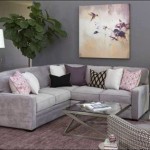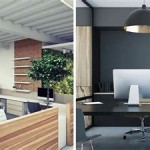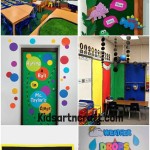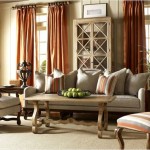Ways to Decorate Your Office Space
The physical environment of an office space significantly impacts employee morale, productivity, and even brand perception. A well-decorated office is not merely aesthetically pleasing; it’s a strategic investment. It cultivates a positive work atmosphere, fosters creativity, and reinforces company culture. Thoughtful office design considerations can extend beyond basic functionality to create a space that inspires and motivates.
Decorating an office space effectively requires careful planning and consideration of various elements. Factors such as available space, budget limitations, desired aesthetic, and the specific needs of employees within the department should be taken into account. A successful office transformation goes beyond superficial styling; it necessitates a deliberate approach to optimize functionality, comfort, and visual appeal.
Optimizing Natural Light and Implementing Effective Lighting Solutions
Natural light is a valuable asset in any workplace. It significantly improves mood, reduces eye strain, and contributes to overall well-being. Maximizing the availability of natural light should be a primary consideration in office design. This can be achieved by arranging workstations near windows, utilizing light-colored paint to reflect sunlight, and avoiding the use of heavy window coverings that block natural illumination.
When natural light is insufficient, implementing effective artificial lighting solutions becomes crucial. Layering different types of lighting is often the most effective approach. Ambient lighting provides overall illumination, task lighting focuses on specific work areas, and accent lighting highlights architectural features or decorative elements. Choosing the appropriate color temperature of light is also important. Cool, blue-toned light is generally preferred for task-oriented areas, while warmer, yellow-toned light can create a more relaxing atmosphere in break rooms or reception areas.
Furthermore, consider energy-efficient lighting options such as LED bulbs. These not only reduce energy consumption and lower utility bills, but also offer a longer lifespan compared to traditional incandescent bulbs. Incorporating dimming controls allows employees to adjust the lighting levels according to their individual needs and preferences, further enhancing comfort and productivity.
Beyond basic functionality, lighting can be used to enhance the aesthetic appeal of the office. Strategically placed spotlights can draw attention to artwork or plants, while decorative light fixtures can add a touch of sophistication to the space. Thoughtful lighting design can transform a mundane office into a bright, inviting, and inspiring environment.
Incorporating Biophilic Design Elements
Biophilic design focuses on connecting people with nature through the built environment. Studies have shown that incorporating natural elements into the workplace can reduce stress, improve cognitive function, and enhance creativity. Bringing nature indoors can be achieved through various means, including plants, natural materials, and nature-inspired artwork.
Adding plants is a simple yet effective way to introduce biophilic elements into the office. Plants not only improve air quality by removing pollutants, but also add a touch of greenery and life to the space. Consider a variety of plant types, including low-maintenance options such as succulents, snake plants, and ZZ plants. Vertical gardens or living walls can also be incorporated to create a visually stunning and space-saving display of greenery.
Utilizing natural materials such as wood, stone, and bamboo can also create a connection to nature. Incorporating wooden furniture, stone accents, or bamboo flooring can add warmth and texture to the office. Consider using natural fabrics such as cotton, linen, or wool for upholstery and window coverings. These materials are not only environmentally friendly but also create a more comfortable and inviting atmosphere.
Nature-inspired artwork can also be used to bring the outdoors in. Choose artwork that depicts natural landscapes, wildlife, or botanical themes. Consider using natural color palettes such as greens, blues, and browns to create a calming and harmonious environment. Installing a small water feature or fountain can also add a soothing element to the office, creating a tranquil and relaxing atmosphere.
By incorporating biophilic design elements, an office can be transformed into a more inviting and restorative space. The connection to nature can improve employee well-being, boost productivity, and create a more positive and engaging work environment.
Personalization and Ergonomic Considerations
Allowing employees to personalize their workspaces can foster a sense of ownership and belonging, leading to increased job satisfaction and productivity. While maintaining a cohesive aesthetic is important, providing a degree of flexibility for individual expression can significantly improve employee morale. This could involve allowing employees to display personal photos, artwork, or small decorative items that reflect their personality and interests.
However, it is important to establish clear guidelines regarding the extent of personalization to ensure that the office remains professional and clutter-free. These guidelines can address issues such as noise levels, offensive or inappropriate content, and the maintenance of a tidy and organized workspace.
Ergonomics plays a vital role in creating a comfortable and healthy work environment. Investing in ergonomic furniture and equipment can prevent injuries, reduce fatigue, and improve overall well-being. Adjustable chairs, monitor arms, and keyboard trays can be customized to fit individual needs, promoting proper posture and reducing strain on the body. Consider providing standing desks as an option for employees who prefer to work in a standing position.
Regular breaks and stretching exercises are also important for maintaining physical health and preventing repetitive strain injuries. Encourage employees to take short breaks throughout the day to stand up, stretch, and walk around. Providing access to resources such as ergonomic assessments and training programs can help employees learn how to set up their workstations correctly and adopt healthy work habits.
Beyond the physical aspects, paying attention to the acoustic environment is also crucial. Excessive noise can be distracting and stressful, negatively impacting concentration and productivity. Implementing noise-reducing measures such as acoustic panels, sound-absorbing materials, and white noise generators can help create a more peaceful and focused work environment. Consider providing employees with noise-canceling headphones as an option for blocking out distractions.
Strategic Use of Color and Branding
Color psychology suggests that different colors evoke different emotions and can influence mood and behavior. Selecting the appropriate color palette for an office space should be a thoughtful process, taking into consideration the desired atmosphere and the nature of the work being performed. For example, blues and greens are often associated with calmness and productivity, while yellows and oranges can stimulate creativity and energy. Reds may be used sparingly as accent colors to draw attention and create a sense of urgency.
Consider the overall aesthetic of the office and choose colors that complement the existing architecture and furniture. Neutral colors such as white, gray, and beige can create a clean and modern look, while bolder colors can be used to add personality and visual interest. It is important to avoid using overly bright or distracting colors that could potentially cause eye strain or fatigue. Test paint swatches in the actual office space to see how the colors look under different lighting conditions before making a final decision.
Integrating company branding into the office décor can reinforce brand identity and create a sense of unity among employees. This can be achieved through various means, such as incorporating the company logo on walls, signage, or furniture. Using the company's primary color palette in the office décor can also help to reinforce brand recognition. Consider displaying company values, mission statements, or achievements on walls to inspire employees and communicate the company's culture.
However, it is important to strike a balance between branding and aesthetics. Overly aggressive branding can be overwhelming and distracting. The goal is to create a subtle and sophisticated integration of the company's brand that enhances the overall visual appeal of the office without being intrusive. Consider working with a professional designer to develop a branding strategy that is both effective and aesthetically pleasing.
Creating Functional Zones and Flexible Spaces
Designing an office space that caters to different work styles and activities is essential for maximizing productivity and collaboration. Creating functional zones for different tasks can help employees focus and work more effectively. Dedicated areas for focused work, collaborative meetings, and relaxation can provide a variety of options for employees to choose from based on their specific needs.
A quiet zone or library can provide a peaceful environment for employees who need to concentrate on individual tasks. This area should be free from distractions such as phone calls and conversations. Comfortable seating, noise-canceling headphones, and ample lighting can help create a conducive environment for focused work.
Collaboration zones should be designed to facilitate teamwork and communication. These areas should include comfortable seating arrangements, whiteboards, and presentation equipment. Consider incorporating flexible furniture that can be easily rearranged to accommodate different group sizes and activities. Open layouts can promote interaction and collaboration, while privacy screens can provide a degree of separation when needed.
Break rooms and relaxation areas are essential for employee well-being. These spaces should provide a comfortable and inviting environment where employees can relax, recharge, and socialize. Consider incorporating comfortable seating, games, and refreshments. Natural light, plants, and relaxing music can help create a calming and restorative atmosphere.
Embrace flexible furniture solutions that can be easily adapted to changing needs. Modular desks, mobile whiteboards, and stackable chairs can be rearranged to create different configurations for meetings, presentations, or individual work. This flexibility allows the office to evolve and adapt to the changing needs of the company and its employees.

4 Ideas For Decorating Your Workspace

4 Ideas For Decorating Your Workspace

15 Ways To Uniquely Decorate Your Office Desk Chairoffice

How Not To Decorate Your Desk Journey

68 Cubicle Decor Ideas To Liven Up Your Office Space Work Desk

15 Ways To Uniquely Decorate Your Office Desk Chairoffice

42 Best Ideas For Decorating Your Office At Work Cubicle Decor Desk Space

Personalize Your Work Space How To Use Cubicle Decor Love Job

15 Ways To Uniquely Decorate Your Office Desk Chairoffice

60 Creative Cubicle Decor Ideas To Boost Ivity
Related Posts







